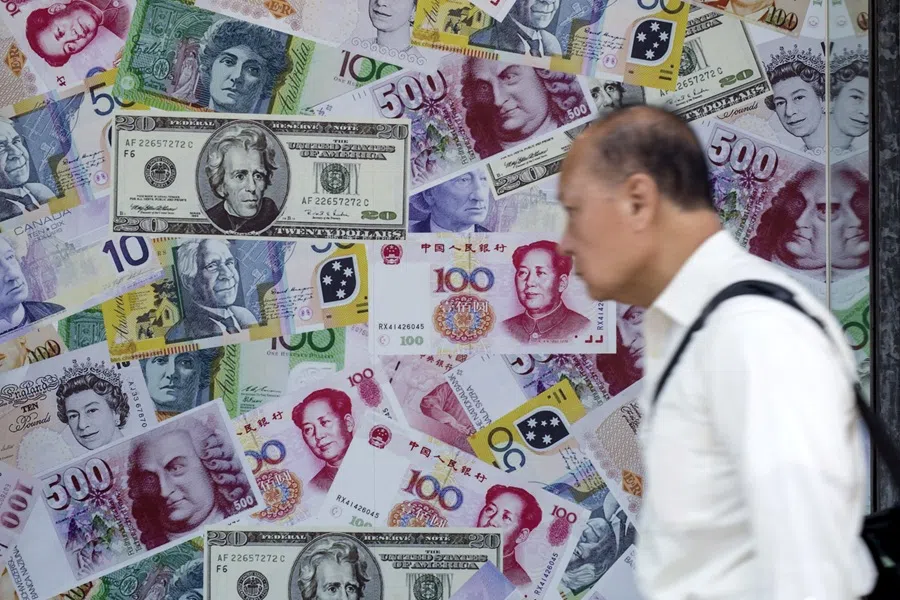Global trade in flux: What the weakening dollar and RMB mean for the world
Depreciation of the renminbi (RMB) may not help China’s RMB internationalisation efforts, while a depreciating dollar has also made US debt less attractive to foreign investors and heightened the risk of renewed inflationary pressures. NUS academic Xu Le examines the impact of Trump tariffs on the RMB and US dollar.

The relationship between China and the US has become increasingly complex, with ongoing tariffs initiated under the Trump administration heightening tensions. While two rounds of trade talks have yielded some progress, many analysts believe the current meeting in Sweden is unlikely to result in a complete removal of tariffs on Chinese products.
Meanwhile, the US has also engaged other economies in discussions on trade tariffs and transshipment taxes specifically targeting Chinese products. These tariff measures are reshaping the global trade landscape and exerting a profound impact on the international trading system.
Weakening RMB and USD
Recent data indicate that the Chinese renminbi (RMB) has continued to weaken against a basket of global currencies, other than the US dollar (USD). Some analysts attribute this trend to China’s effort to preserve the price competitiveness of its exports to other economies.
At the same time, the USD has not been spared from the repercussions of its volatile tariff policies. The decline in the USD index — tracking its performance against six major currencies — reflects a weakening of the dollar’s relative strength.
This trend suggests an effort to support exports to trading partners other than the US.

These developments raise important questions: will China continue to allow further depreciation of the RMB to support its export-driven growth? What implications might this have for the ongoing push to internationalise the RMB? As for the USD, could its dominant role in the global financial system come under threat? And how might a weaker dollar shape the trajectory of the global economy in 2025?
China’s dual RMB strategy
According to data from the China Foreign Exchange Trade System, the Chinese RMB has depreciated against a basket of global currencies while remaining relatively stable against the USD in recent months. This trend suggests an effort to support exports to trading partners other than the US.
China’s latest official data shows that exports in June rose by 5.8% year-on-year, exceeding the 5% growth forecast by Bloomberg economists. This stronger-than-expected performance can be partly attributed to China’s currency policy and the front-loading of orders by key trading partners. However, the full impact of the newly imposed tariffs on Chinese exports is likely to materialise over the next three to six months.
Driven by RMB depreciation, industrial overcapacity and weakening domestic demand, Chinese producers — especially in the new energy sector — are increasingly seeking revenue streams abroad. This trend has raised significant concerns in the US, as it poses potential risks to its manufacturing sector and related industries. Hence, Trump’s tariffs on these Chinese products are unlikely to be substantially reduced.
... the RMB is likely to remain stable or even appreciate slightly against the USD. This would avoid giving the US further justification to impose additional sanctions on Chinese products.
At the current stage, the RMB is likely to remain stable or even appreciate slightly against the USD. This would avoid giving the US further justification to impose additional sanctions on Chinese products.
As for other economies impacted by Trump’s broad-based tariff measures, the RMB may continue to depreciate to enhance China’s export competitiveness in those markets, thereby supporting export growth and helping to stabilise its overall economic performance.

Furthermore, a slight appreciation of the RMB in the near future seems to be necessary, as a stronger currency could boost investor confidence in RMB-denominated assets, curb capital outflows and demonstrate resilience amid global economic and political uncertainties.
RMB’s internationalisation hurdle
Trump’s tariffs have not only heightened uncertainty surrounding China’s economic outlook in 2025, but also posed additional challenges to the RMB’s internationalisation.
The internationalisation of the RMB is closely tied to China’s economic fundamentals. At present, the country is grappling with weakening domestic demand and deflationary pressures, as both consumer and producer prices continue to decline. Trump’s tariffs have dealt a blow to China’s export sector, further dampening global investor sentiment toward its economic prospects.
Moreover, the depreciation of the RMB does not seem to support its internationalisation. Overseas trading partners who rely on RMB settlement may request to switch to other currencies in order to hedge against exchange rate risks. In addition, a weakening currency may prompt investors to reduce holdings of RMB-denominated assets in favour of more stable or higher-yielding alternatives.
USD reflects trade war fears
Nevertheless, the US does not appear to have gained significantly from Trump’s tariffs. On the contrary, they have resulted in a scenario of mutually assured destruction. The weakening USD reflects global investors’ concerns about the impact of the ongoing trade war on the US economic outlook.
If the USD is no longer perceived as a safe-haven currency, foreign investors may begin reallocating their assets away from the US.

A depreciating dollar has also made the US debt less attractive to foreign investors and heightened the risk of renewed inflationary pressures. While no currency currently poses a serious challenge to the USD’s dominant role in global trade and finance, its leading position may have begun to show signs of vulnerability.
If the USD is no longer perceived as a safe-haven currency, foreign investors may begin reallocating their assets away from the US. This shift could present an opportunity for another currency to accelerate its process of internationalisation and enhance its role in the global financial system.
All in all, the impact of Trump’s tariffs on the RMB and the USD will unfold gradually over time. The global landscape is becoming increasingly complex and unpredictable. What remains certain, however, is that the second half of 2025 will pose significant challenges not only for China and the US, but also for the rest of the world.
The opinions expressed are those of the writer and do not represent the views and opinions of NUS.




![[Big read] China’s 10 trillion RMB debt clean-up falls short](https://cassette.sphdigital.com.sg/image/thinkchina/d08cfc72b13782693c25f2fcbf886fa7673723efca260881e7086211b082e66c)
![[Big read] Love is hard to find for millions of rural Chinese men](https://cassette.sphdigital.com.sg/image/thinkchina/16fb62fbcf055b710e38d7679f82264ad682ce8b45542008afeb14d369a94399)